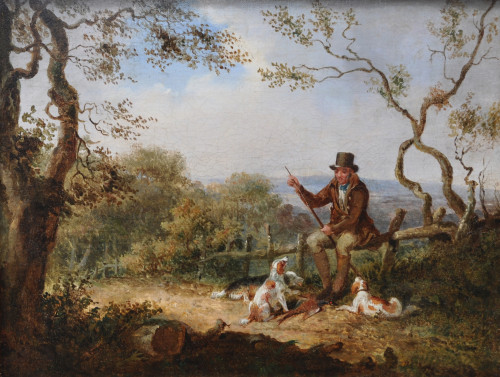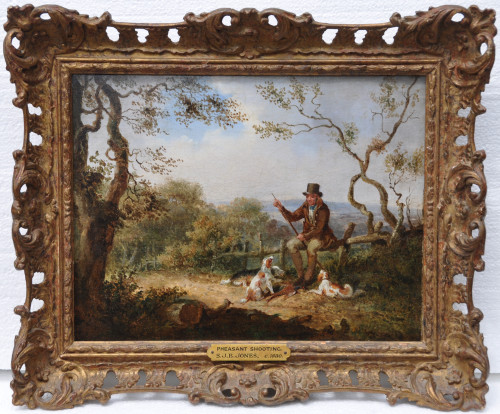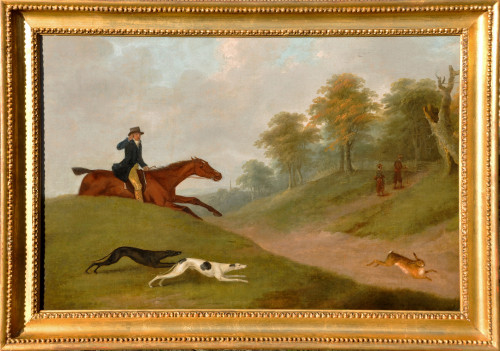An aviary of song birds
An aviary of song birds
TOMASSO CAMPANA
Early 17th century
Italian School
An aviary of song birds
Oil on canvas
74 x 91.3 cms
291/8 x 35¾ ins
Overall framed size 84.8 x 102.5 cms
333/8 x 403/8 ins
The birds portrayed on the rail are, left to right: Hawfinch, Kingfisher, Red Leg Partridge, Albino Pheasant, Robin, Northern Red Cardinal
Clockwise, starting at the top are: Robin, Bullfinch, Great Spotted Woodpecker, pair of Wrens, Magpie, Grey Partridge, Great Tit, Tree Sparrow, Pheasant and a Thrush.
Tomasso Campana was a painter of Bolognese origin whose work is comparatively scarce. Little is known of his life and background apart from a few records and surviving paintings.
In 1604, he was attached to the workshop of the early baroque figure and religious painter Ludovico Carracci (1555-1619) and in this capacity worked on frescos in the cloister of San Michele in Bosco depicting scenes from the life of St Cecilia. He then joined the studio of the Guido Reni (1575-1642) who became the dominant figure in the Bolognese Baroque School painting religious, mythological and allegorical subjects and Campana worked under him on frescos in the Quirinal Palace.
The transition in Campana’s oeuvre from a classical figurative background to animal and still life subject matter is interesting although not a completely isolated incident in the Bolognese School at that time. There are a few known examples by two other pupils of Reni, Simone Cantarini and Francesco Gessi, which indicate that the influence of the great Milanese/Roman master Caravaggio was extending beyond Rome. The Flemish artist Frans Snyders (1579-1657) who travelled to Rome and Milan in 1608-9, was an influence also on Italian animal painting but Caravaggio’s depiction, particularly of still life, was more significant.
Two paintings in the Galleria Borghese which have been ascribed to the Master of Hartford, show the influence of Caravaggio. Although these works are predominantly of dead birds, the way that they are lined in rows, hanging from rods or hooks across the painting, is a similar artistic construction to the living animals in this painting.
Campana left Bologna in 1605 and moved to Rome in 1609 where he remained until 1619. In 1619, Scipione Borghese commissioned Campana to paint some canvases of birds and fish for his villa in Mondragone. Another little known painter of birds in the Borghese pontificate in the early decades of the 17th century was Antonio Cinatti who came from Frascati to Rome and worked in a more naturalistic style compared to others involved in that genre.
Apart from the aforementioned frescos at the Quirinal Palace and San Michele, other institutions that hold, or did hold, examples of his work include: La Musée Fesch in Ajaccio, Corsica; Pinacoteca Nazionale de Bologna, (one of his paintings from the collection of the Zambeccari family now lost) and the Staatgalrie, Stuttgart Penitent Magdalene (also lost).
Dimensions:
RELATED ITEMS

























